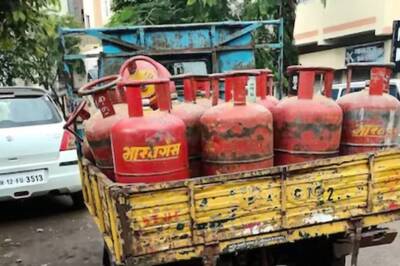
views
The industrial and logistics (I&L) segment of the real estate sector attracted about $144 million across greenfield (fresh) and brownfield (existing) assets during January-September 2022, led by global investors, with a major share of 63 per cent followed by domestic players, according to a report by real estate consultant CBRE South Asia.
“With India’s rising importance in the global value chain, it is estimated that the I&L stock would double by 2030 to cross 700 million sqft as occupiers continue to expand across segments such as e-commerce, 3PL, and engineering & manufacturing. Further, the share of grade-A developments in I&L stock is also expected to rise from 35 per cent (as of Q3 2022) to more than 50 per cent by 2030, driven predominantly by occupier focus on ‘flight to quality’. It is estimated that more than $20 billion in investment would be required to develop additional I&L spaces by 2030,” CBRE said in the report.
It added that the I&L segment leasing activity picked up by 40 per cent in Q3 over Q2 2022 and recorded 9.2 mn sqft absorption, up 18 per cent y-o-y in Q3 2022. During the January-September 2022 period, leasing remained stable, with about 22 million sqft of leasing activity recorded during this period. Third-party logistics players (3PL) led the leasing activity with nearly 50 per cent. The total supply addition in the same period stood at 13 million sqft.
The report also focused on the boost received by e-commerce on account of supply chain disruptions, leading to an increase in storage space and logistics service providers demand in tier-II & III cities such as Lucknow, Nagpur, Indore, Kochi and Coimbatore.
“Demand centres are also expected to witness stronger leasing as several occupiers prefer to locate their warehouses closer to consumption hubs to reduce transport costs,” it said.
Anshuman Magazine, chairman & CEO (India, South-East Asia, Middle East & Africa) of CBRE, said, “Globally, the pandemic has exposed the soft underbelly of global supply chains, causing corporates to take a sharp look at their procurement and manufacturing strategies. Supply-side interventions such as a unified policy framework, interconnected infrastructure, digital transformation, and a skilled ecosystem would drive down transportation costs through supply chain optimisation and modernisation. In addition, the MMLP policy would further encourage global and domestic investors/ developers to venture into the segment.”
A Road Map For Navigating Anticipated Future Challenges
To keep inventory costs in check, companies must pursue smarter strategies, including dual sourcing of raw materials and regionalizing supply chains. Supply chains will remain resilient with a combination of ‘just-in-time’ and ‘just-in-case’ strategies.
Corporates should increasingly localise supply chains to hedge against future exogenous stocks as they move operations closer to end-user markets. Further, several companies must reorganise their critical supply chains to replace risky foreign suppliers with close/safe allies, a process called ‘friend-shoring’.
To improve supply chain resilience and planning, digital tools will continue to become increasingly relevant. Digital investments will increasingly focus on demand and supply planning instead of supply chain visibility.
Diversification of the logistics planning process by including more third-party logistics providers would become more widespread. This would be done by either creating alternative routing plans or utilizing a broader spectrum of transport modes.
Read all the Latest Business News here



















Comments
0 comment